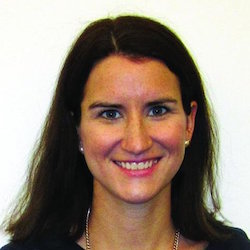_0.png)
The field of media buying, at one point the domain of influential agencies that specialized in that particular task, has been completely upended by the programmatic marketplace and other developments in transactional technology. In recent years, we’ve seen a great restructuring in who’s involved in media buying and where they’re transacting. Whether or not you want to call this effect democratizing, it’s certain decentralizing, and it’s changed the game, in no small part for entities that have the resources, the tech and the scratch to step in and take ownership of the media buying process.
Emmy Spahr is someone who can speak authoritatively on this, having spent over a decade working with a clutch of national and international brands on their digital strategy. Her career path has included five years with subsidiaries of Publicis Groupe — four with MediaVest, until she was named the first Director of Programmatic at Razorfish. You can hear Spahr discuss what’s trending in media buying, from her unique perspective, at OPS in New York on June 7 — she’ll be part of a panel on “The Future of Media Buying,” along with Jim Caruso from Varick Media Management and Tony Effik from R/GA. In the meantime, AdMonsters reached out to Spahr to get some background on what her changing responsibilities in the media buying space suggest about where media buying is going.
How has your past work at MediaVest — known as a media buying shop — informed your current work at Razorfish — known more as a creative shop? Does your move over to Razorfish indicate something broader about the way creative agencies like Razorfish want to work with clients?
The priorities and mission of Razorfish as a digital-specific shop mean applying some of the more integrated media best practices and processes to a group who is less connected to the offline channels for a client. Creative agencies want to design solutions for clients that capture all of the benefits of data and technology to improve the consumer’s experience and how we tell a brand’s story. It’s about putting the customer at the center of everything we do.
How involved are your brand clients with the trading desks these days? Between the client and the agency, who takes the lead? If there’s been a substantial change in that relationship, to what degree has it changed outcomes?
The agency definitely takes the lead in driving innovation and proliferation of the programmatic construct. There are exceptions, but many clients need to be educated on what the true meaning of programmatic media is and how it’s growing to include tactics and inventory beyond the open exchanges. The more clients understand the value of the agency owning the media buys, rather than handing off as an IO to a third party, the easier it is to shift to satisfy their goals.

How do you assess the performance of private marketplaces right now? How willing are clients to get into the open marketplace versus private marketplaces, and if you’ve seen a change in that regard, in one direction or another, to what do you credit that change?
We value PMPs, and our clients are willing to test and learn in the flexible and non-guaranteed setup more and more. Most clients are used to the open marketplace and just learning that PMPs can take DSP buys closer to the inventory and data application for buying. I think that the value for publishers’ yield and the requests for more platform based buys by agencies is driving this adoption very quickly.
Has header bidding affected the way you conduct buys? If so, how?
Header bidding is not changing the way we conduct buys, but it is making it important for buyers to understand exactly how their deal is functioning within the waterfall/the optimized header bidding work-around.